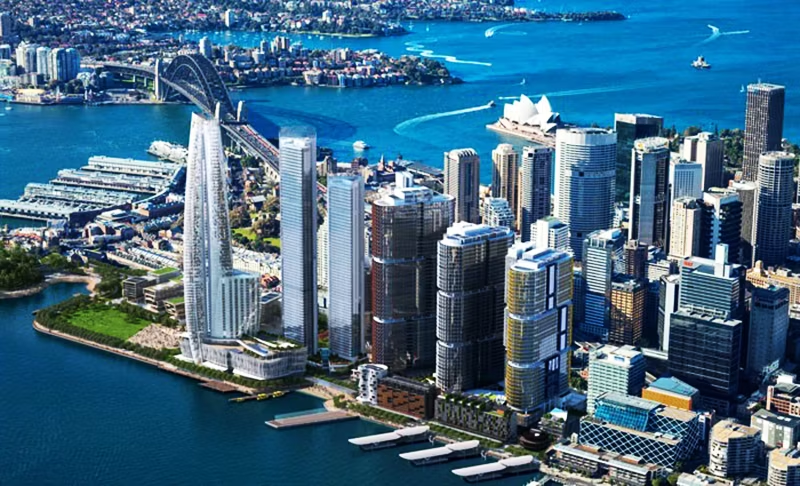PT Meaningful Design: Crafting Purposeful and Impactful Experiences

In the modern world, design extends far beyond aesthetics. It’s about creating meaningful experiences that resonate with users, influence behaviors, and foster lasting connections. The concept of meaningful design integrates purpose, functionality, and empathy, ensuring that every aspect of a product or service not only meets but exceeds user expectations. This article delves deep into the principles, significance, and applications of meaningful design, offering insights into how it can transform industries and enrich lives.
The Essence of Meaningful Design
Understanding Meaningful Design
Meaningful design is the practice of creating products, services, and experiences that have a positive, lasting impact on users. It focuses on the purpose behind a design, emphasizing functionality, usability, and emotional resonance. Unlike traditional design, which often prioritizes form and aesthetics, meaningful design considers the broader context in which a product will be used, aiming to solve real-world problems and enhance user well-being.
Core Principles of Meaningful Design
- User-Centric Approach: At its heart, meaningful design is about understanding and addressing the needs, desires, and pain points of users. This involves extensive research, empathy, and continuous feedback loops to ensure that the design remains relevant and effective.
- Purpose-Driven: Every element of a meaningful design serves a clear purpose. This principle ensures that resources are used efficiently and that users derive maximum value from the product.
- Emotional Connection: Successful designs resonate emotionally with users, creating a sense of attachment and loyalty. This emotional connection often stems from the design’s ability to solve problems, provide comfort, or evoke positive feelings.
- Sustainability and Ethics: Meaningful design considers the long-term impact of products on society and the environment. Ethical considerations, such as sustainability, inclusivity, and social responsibility, are integral to the design process.
- Iterative Process: Meaningful design is an ongoing process of iteration and improvement. Designers continually refine their work based on user feedback, technological advancements, and changing societal needs.
The Significance of Meaningful Design
Enhancing User Experience
Meaningful design significantly enhances user experience by addressing both functional and emotional needs. Products designed with a user-centric approach are more intuitive, efficient, and enjoyable to use. This leads to higher user satisfaction, increased adoption rates, and greater brand loyalty.
Fostering Innovation
By focusing on purpose and user needs, meaningful design drives innovation. It encourages designers to think creatively about solving problems and meeting unmet needs. This innovative mindset can lead to breakthrough products and services that redefine industries and improve lives.
Building Brand Identity
A commitment to meaningful design can become a key differentiator for brands. Companies known for their thoughtful, user-centric designs often enjoy stronger brand identities and reputations. Consumers are more likely to trust and support brands that consistently deliver valuable and impactful experiences.
Promoting Sustainability
Sustainability is a crucial aspect of meaningful design. By prioritizing eco-friendly materials, ethical manufacturing practices, and product longevity, designers can minimize environmental impact and contribute to a more sustainable future. This approach not only benefits the planet but also appeals to increasingly eco-conscious consumers.
Addressing Social Issues
Meaningful design has the power to address pressing social issues. Inclusive design, for instance, ensures that products are accessible to people of all abilities, fostering greater equality and social inclusion. Additionally, designs that consider cultural sensitivities and promote positive social behaviors can contribute to a more harmonious and equitable society.
Applications of Meaningful Design
In Technology
In the tech industry, meaningful design plays a pivotal role in creating user-friendly and impactful products. From intuitive software interfaces to innovative hardware, technology designed with a focus on user experience and purpose can significantly enhance productivity, connectivity, and quality of life.
Case Study: Apple’s iPhone
Apple’s iPhone is a prime example of meaningful design in technology. The iPhone’s design emphasizes simplicity, ease of use, and emotional appeal. Features such as the intuitive user interface, high-quality materials, and seamless integration with other Apple products create a cohesive and satisfying user experience. Apple’s commitment to meaningful design has helped the iPhone become one of the most iconic and successful products in history.
In Architecture
Architecture is another field where meaningful design can have a profound impact. Buildings and spaces designed with a focus on functionality, aesthetics, and human experience can improve quality of life, foster community, and promote well-being.
Case Study: The High Line, New York City
The High Line in New York City is a notable example of meaningful design in architecture. This elevated park, built on a disused railway track, transforms an urban space into a vibrant public area. The design prioritizes accessibility, sustainability, and community engagement, offering residents and visitors a unique and enjoyable environment. The High Line demonstrates how thoughtful design can revitalize urban areas and enhance social cohesion.
In Product Design
Product design is perhaps the most visible arena for meaningful design. From everyday items to specialized tools, products designed with purpose and user needs in mind are more effective, desirable, and sustainable.
Case Study: Dyson Vacuum Cleaners
Dyson vacuum cleaners exemplify meaningful product design. Dyson’s designs focus on solving common problems, such as loss of suction and difficult maneuverability. By rethinking traditional vacuum cleaner design and incorporating innovative technology, Dyson has created products that offer superior performance, ease of use, and longevity. This commitment to meaningful design has made Dyson a leader in the home appliance industry.
In Service Design
Service design applies meaningful design principles to the creation of services, ensuring that every touchpoint and interaction is optimized for user satisfaction and effectiveness.
Case Study: Starbucks
Starbucks’ service design is a model of meaningful design in the service industry. The company focuses on creating a welcoming and comfortable environment, personalized customer experiences, and high-quality products. Starbucks’ attention to detail, from store layout to customer service training, ensures a consistently positive experience for customers. This approach has helped Starbucks build a loyal customer base and a strong global brand.
The Future of Meaningful Design
As society continues to evolve, the importance of meaningful design will only grow. Emerging technologies, shifting consumer values, and global challenges such as climate change and social inequality will drive the need for thoughtful, purpose-driven design solutions. Designers will need to stay adaptable, empathetic, and committed to continuous improvement to meet these evolving demands.
Integrating AI and Machine Learning
Artificial intelligence (AI) and machine learning (ML) offer exciting possibilities for meaningful design. These technologies can provide deeper insights into user behavior, enable personalized experiences, and automate routine tasks, allowing designers to focus on more strategic and creative aspects of their work.
Emphasizing Inclusivity
Inclusivity will remain a critical focus for meaningful design. As awareness of diversity and accessibility issues grows, designers will need to ensure that their products and services are usable and enjoyable for people of all backgrounds and abilities.
Prioritizing Sustainability
Sustainability will continue to be a driving force in design. Designers will need to prioritize eco-friendly materials, energy-efficient processes, and designs that promote reuse and recycling. This commitment to sustainability will not only help protect the planet but also resonate with environmentally conscious consumers.
Fostering Collaboration
The future of meaningful design will also involve greater collaboration across disciplines and industries. By working together, designers, engineers, marketers, and other stakeholders can create more holistic and impactful solutions that address complex, interconnected challenges.
Conclusion
Meaningful design is more than a trend; it’s a fundamental shift in how we approach creating products, services, and experiences. By focusing on purpose, user needs, and long-term impact, meaningful design has the power to transform industries, enhance lives, and contribute to a more sustainable and equitable world. As we move forward, embracing the principles of meaningful design will be essential for anyone seeking to create lasting, positive change.




